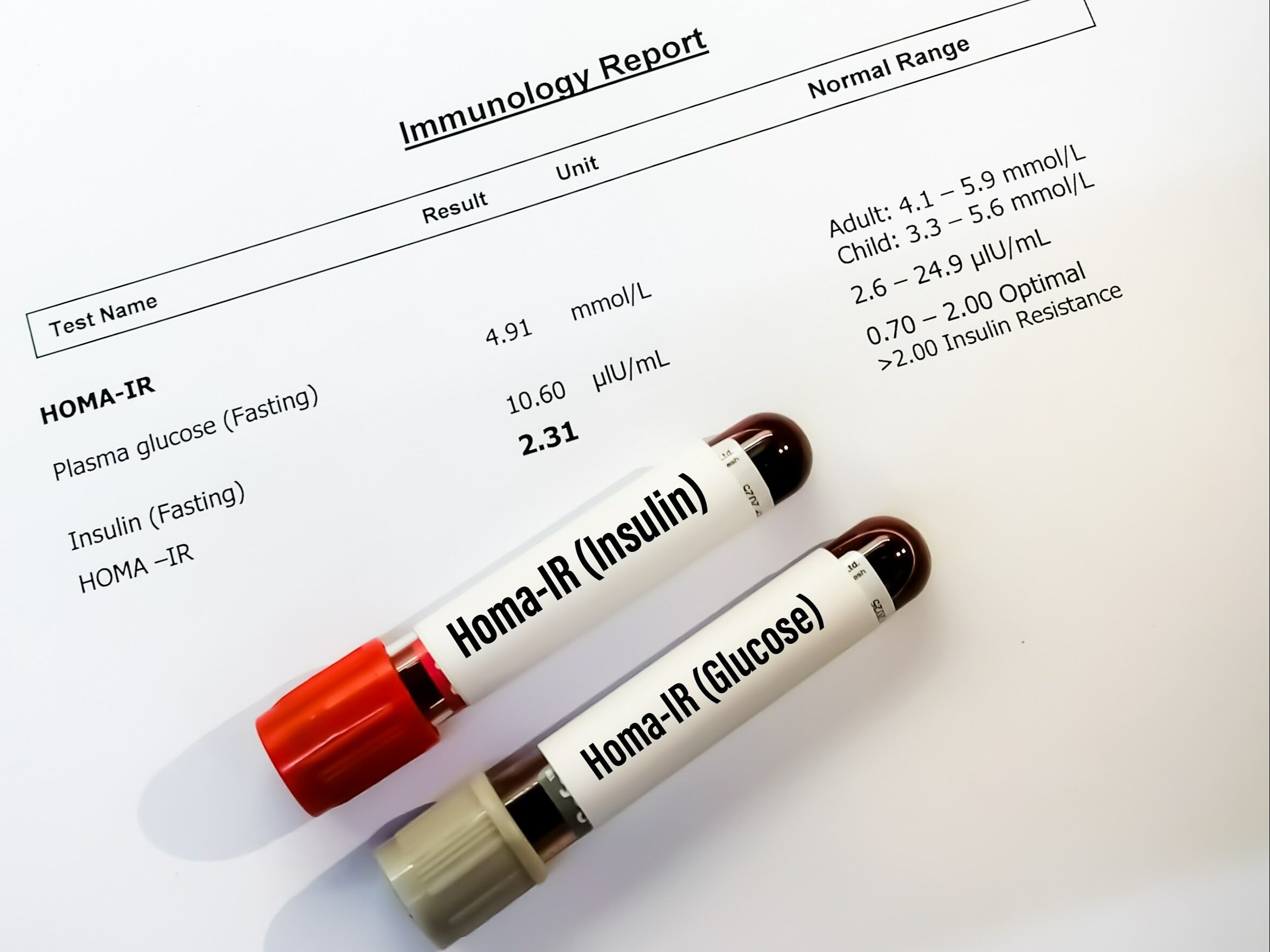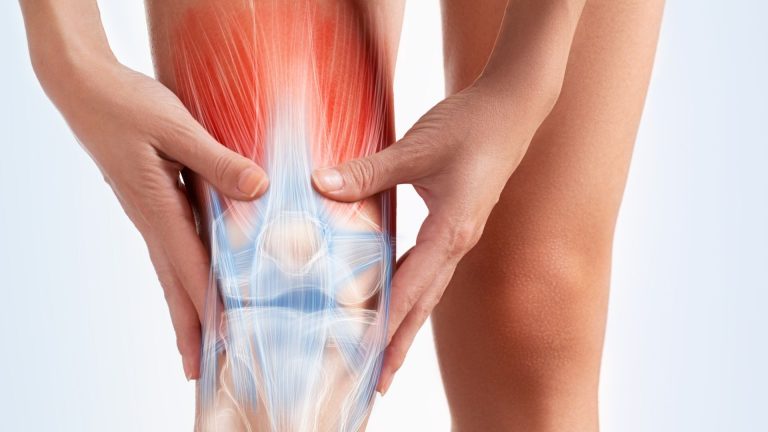Do you suspect insulin resistance? Check the HOMA indicator. See what it is and how to calculate it

The HOMA index (HOMA index, HOMA-IR index, insulin resistance index) is a tool used to assess the degree of tissue sensitivity to insulin. It is used in the diagnosis of insulin resistance. Insulin resistance is a common metabolic disorder that may affect up to half of the Polish population, constituting a significant risk factor for the development of type 2 diabetes and other diseases. Find out how to calculate HOMA-IR and learn more about insulin resistance.
The HOMA-IR (Homeostatic Model Assesment – Insulin Resistance) index, also known as the insulin resistance index, is a tool that allows us to determine the degree of insulin resistance, which indicates disturbances in the body’s carbohydrate metabolism.
HOMA-IR indicator – basic information
The HOMA index is calculated based on the concentration of glucose and insulin in fasting blood serum. The HOMA-IR index is an index used in the diagnosis of insulin resistance. Importantly, the result of the HOMA-IR indicator is not final, because the result obtained by using the HOMA indicator is indicative. It should be confirmed by the results of other tests. Insulin resistance should not be diagnosed solely on the basis of the HOMA-IR indexthe calculation of which is facilitated by the HOMA-IR calculator.
The diagnosis of insulin resistance includes additional tests, including fasting serum glucose, oral glucose tolerance test (OGTT), proinsulin levels, adiponectin (ADPN) and C-reactive protein. At the stage of diagnosing glucose metabolism disorders, the Quicki index (Quantitative Insulin Sensitivity Check Index) should also be calculated.
What should be the normal glucose and insulin concentrations in blood serum?
Normal glucose concentration is between 70–99 mg/dl (3.9–5.5 mmol/l). In healthy people, the concentration of glucose in blood serum two hours after a meal should not be higher than 140 mg/dl (7.8 mmol/l).
The correct insulin level before eating a meal should not exceed 10 mU/ml. The increase in insulin levels after eating a meal also says a lot about your health. In healthy people, one hour after consuming glucose, the insulin level in the blood should not exceed 50 mU/ml. Two hours after consuming glucose, insulin levels should drop to 30 mU/ml.
How to calculate the HOMA-IR index?
To calculate the HOMA index, you need to perform a blood insulin test and determine the blood glucose level. The HOMA-IR index is calculated by multiplying the fasting insulin level (mU/ml) by the fasting sugar level (mmol/l) and dividing the result by 22.5. The result obtained is the HOMA-IR index.
A low HOMA-IR index (< 2.5) does not indicate insulin resistance. A high HOMA-IR index (>2.5) may indicate insulin resistance.
Calculating the HOMA-IR index is made easier with the HOMA-IR calculator. However, you should know that the HOMA indicator is currently used only in scientific research.
What is insulin resistance?
Insulin resistance (IR) is a disorder of glucose metabolism that is characterized by the resistance of body cells to the action of insulin. Insulin is a polypeptide hormone produced in the pancreas by the β (beta) cells of the islets of Langerhans, which regulates the concentration of glucose in the blood. In the course of insulin resistance, body cells respond less strongly to the action of insulin, which leads to a compensatory increase in the secretion of this hormone (hyperinsulinemia).
Insulin resistance is often associated with other disorders. These include:
-
hypertension,
-
high blood cholesterol levels,
-
obstructive sleep apnea,
-
polycystic ovary syndrome (PCOS),
-
high concentration of triglycerides in the blood,
-
non-alcoholic fatty liver disease,
-
impaired glucose tolerance,
-
abdominal obesity.
It happens that the reduced sensitivity of cells to insulin has a genetic basis, but much more often, incorrect eating habits and lifestyle contribute to the development of insulin resistance. Typically, insulin resistance is a disorder resulting from overweight or obesity and lack of physical activity.
The risk of developing insulin resistance increases with age. Decreased insulin sensitivity often occurs in pregnant women, increasing the risk of developing gestational diabetes. Adolescents during puberty experience physiological insulin resistance, which is related to hormonal changes.
The risk of insulin resistance increases by factors such as:
-
sedentary lifestyle,
-
overweight and obesity – in particular abdominal obesity (so-called visceral obesity),
-
dietary mistakes that cause a sudden release of insulin, including: following a diet rich in simple sugars and eating irregular meals,
-
some diseases and medications taken,
-
genetic factors.
Important – a high HOMA index should prompt you to change your diet and lifestyle.
Is it possible to reduce insulin resistance?
Reducing insulin resistance and the associated risks is possible. To reduce insulin resistance, it is necessary to change your lifestyle, which includes the use of a properly composed diet. The basis of the diet for insulin resistance should be products with a low glycemic index. For people with insulin resistance, a Mediterranean diet is recommended, as it helps control blood glucose levels.
Regular physical activity also has a significant impact on the level of glucose and insulin in the blood, which helps increase the sensitivity of cells to insulin.
To sum up, the HOMA-IR index, i.e. the quotient of insulin and glucose concentration in the blood, divided by 22.5, allows for the preliminary detection of glucose metabolism disorders, which indicate insulin resistance. Although the HOMA-IR index may suggest that we are dealing with insulin resistance, it is not a reliable diagnostic tool. In order to diagnose insulin resistance, specialized tests must be performed, including: oral glucose tolerance test.
Sources:
-
M. Szurkowska, K. Szafraniec, A. GIlis-Januszewska et al., Indicators of insulin resistance in a population study and their predictive value in determining the metabolic syndrome, Przegląd Epidemiologiczne, 59, pp. 743–751, 2005
-
Witek J, Witek P, Pańkowska E., Insulin resistance in children. Pediatric Endocrinol Diab Metabol, 17(4), pp. 206–213, 2011
-
Monika Skoczenie, Kacper Radwański, Joanna Chrzanowska, Agnieszka Zubkiewicz-Kucharska, Occurrence of carbohydrate and lipid metabolism disorders in children with simple obesity depending on age and degree of obesity, Endokrynologia Pediatyczna, 4(49), pp. 27-36, 13/2014
-
Gajewski P., Szczeklik A., Internal Medicine Szczeklika 2016, Textbook of internal diseases, Medycyna Practical, Kraków, 2016






